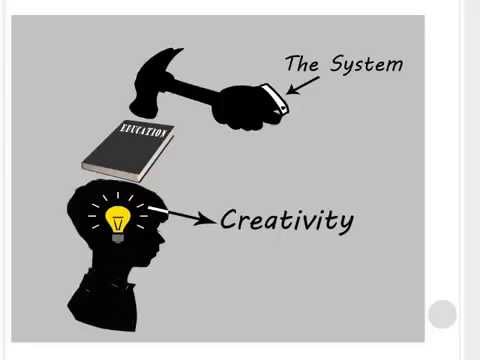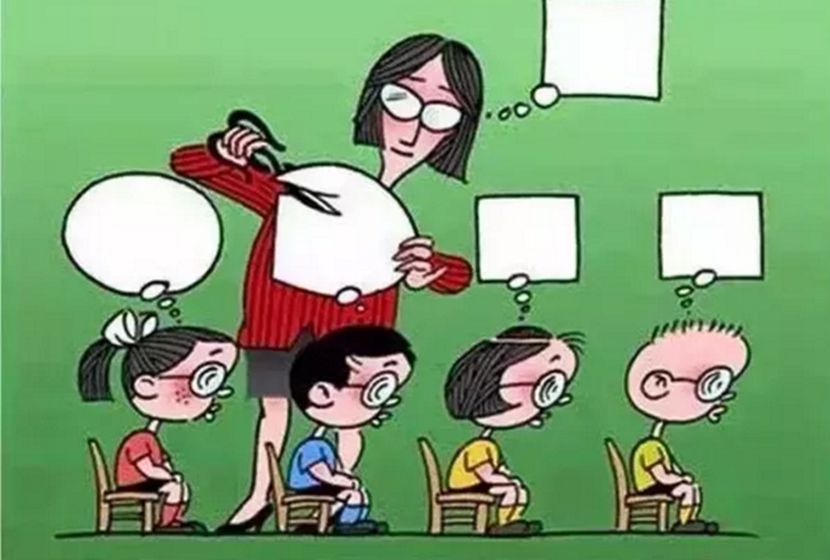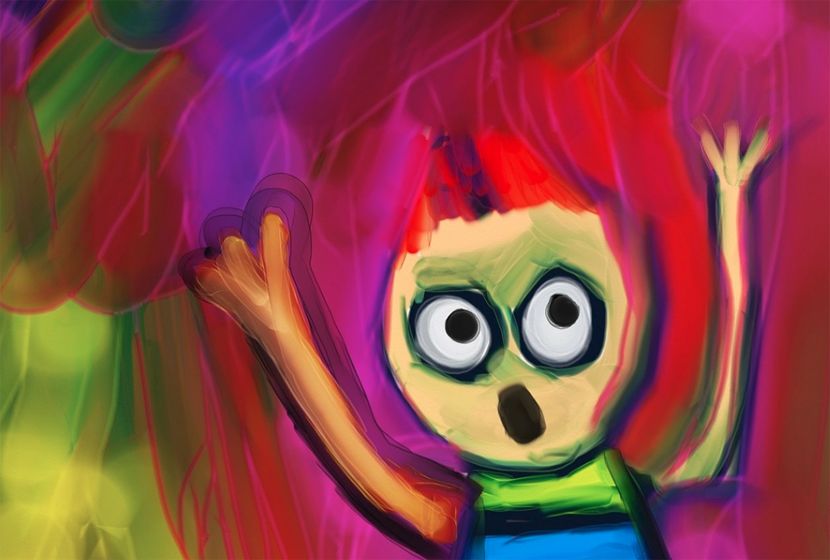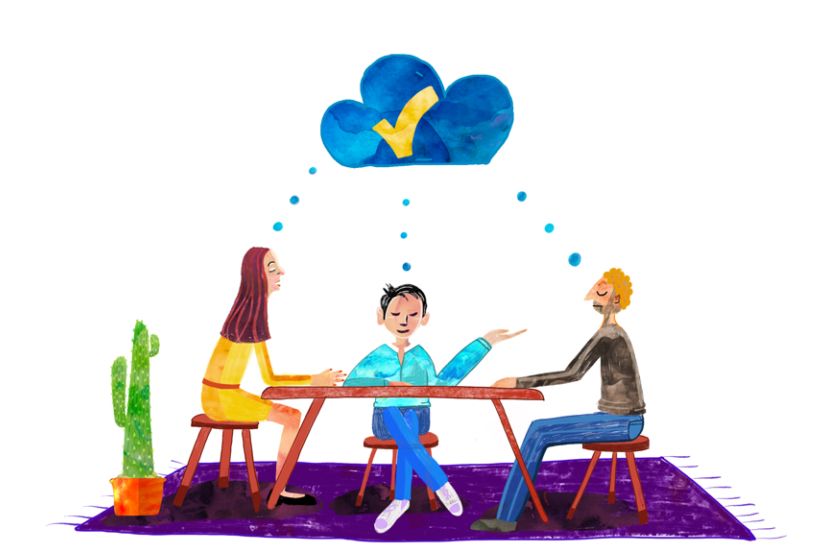This rhetorical analysis essay example emphasizes the problems that the educational system has right now. Using the Ted Talk by Ken Robinson, “Do Schools Kill Creativity,” it was found that various institutions fail to educate students in the expected way as they cannot encourage their creativity. Such issues arise due to the low income in various professions. Moreover, it happens due to strict educational frameworks where test-solving skills matter the most. In turn, the speaker explains why such a tendency is a problem for society. He delivers his argument by using ethos, pathos, and logos. Additionally, the use of rhetorical appeals helps Robinson to call to action so that listeners change their perception of what is right and wrong when it comes to students and their development.
Introduction
For my rhetorical analysis essay example, I have chosen a speech by Ken Robinson, who argues that the public education system in America kills creativity. Ken Robinson’s speech, “Do Schools Kill Creativity,” has become one of the most popular TED Talks. It sparks the idea that we are “educating people out of their creativity” (Robinson, 2006), as one might explore in an mla style paper example. Unfortunately, schools encourage students to stand on what is taught socially and intellectually without questioning. Even when students are allowed to be creative, they face a lot of restrictions on what they do. Therefore, schools discourage creativity in the majority of cases, limiting people’s potential and stealing their shine. A thorough view of the speech demonstrates that Robinson is concerned about the issue. He achieved this goal by making proper use of rhetorical devices, such as pathos, ethos, and logos appeals, throughout his speech.
Summary of Robinson’s “Do Schools Kill Creativity”
In his speech “Do Schools Kill Creativity,” the speaker, Ken Robinson, persuades his audience, which includes parents, teachers, officials, and the American nation in general, that the current education system destroys children’s creativity. A similar argument appears in abortion research paper thesis discussions on challenging societal norms. He points out that modern schools prioritize academic subjects over other formats of learning, and such a situation results in a strict hierarchy that ruins students’ ability and desire to present new ideas. Robinson (2006) suggests that the traditional school system is outdated and rooted in the 20th century since people had to follow the requirements of the industrial world, focusing primarily on preparing students for the workforce. In his speech, Robinson (2006) illustrates that children are naturally willing to take risks, but schools kill creativity due to their fear of making mistakes. The speaker also believes that human creativity is as important as thinking beyond traditional academic abilities. Besides, Robinson (2006) shares anecdotes, such as the story of Gillian Lynne, a famous choreographer who struggled in traditional school settings but thrived once her creative potential was recognized. Robinson concludes his speech by advocating for a fundamental rethinking of education and its system to develop and encourage creativity in students, preparing them to their future lives rather than promoting an outdated model of academic success that is not working as it should today.

Pathos Analysis
First of all, Robinson uses a pathos appeal to captivate the attention of his audience. He begins his talk by narrating the story of a student named Gillian who had trouble staying focused in class. Her parents, who thought she had attention-deficit/hyperactivity disorder (ADHD), took her to a specialist to determine how her condition could be treated. Luckily, specialists told her mother that their child was not sick, saying, “She’s a dancer, take her to dance school” (Robinson, 2006). As a result, Gillian became one of the most creative and popular ballet dancers of all time. At this point, Robinson appeals to pathos so that the audience connects emotionally to the disappointment that the speaker feels when it comes to the existing education system. Unfortunately, a lot of people are underestimated and oppressed due to the inability of educators to understand their talent.
Connecting to the Audience
Pathos is determined by the level to which Robinson succeeds in connecting to his target audience. By using a story that provides a contrast between ADHD and talent, the speaker explains how blur is the line between creativity and misunderstanding. Hence, if specialists advised her parents differently, they would have spent a lot of time and money on ADHD treatment to force her to focus on subjects at school that were not significant for her future career (Robinson, 2006). Unfortunately, the education system stigmatizes mistakes through tests and strict learning programs. However, children need an individual approach to determine the way on how to teach them and how to reach their highest potential.
Ethos Analysis
The use of ethos is Robinson’s argumentative structure due to his extensive background in the fields of education and arts. For example, he is an internationally recognized leader in the fields of educational reforms and creativity (Robinson & Aronica, 2016). His credibility is rooted in his extensive experience and scholarly work. For example, by considering the context of education and school settings, the instruction of creativity requires different considerations and combinations of skills, capabilities, behaviors, thoughts, insights, and other traits that students need to shape while learning (Li, 2023). The speaker’s authoritative knowledge and experience enhance his credibility and make his argument more compelling. Furthermore, Robinson’s previous jobs and roles, including his work as Professor of Arts Education at the University of Warwick, only add more value to his insights (Robinson & Aronica, 2016). Therefore, the use of ethos in the form of Robinson’s professional expertise establishes this speaker as a trustworthy and knowledgeable person. His use of ethos strongly supports the main purpose of his speech – education systems need to develop rather than kill creativity.
Promoting Creativity
An ethos appeal within the speech convinces listeners of how the school system could be improved to promote creativity. The speaker wants the audience to realize that each person has real potential, and he uses key statements of persuasion in his speech. For example, it is evident when Robinson (2006) mentions, “All kids have tremendous talents.” He persuades his audience by telling people that, in the right environment, all children would be very creative. Hence, using the credibility of a university professor, people believe the speaker that all students are bright. He earns such trust because people think that any person who deals with them each day says so, which is a perfect example of the use of rhetorical appeals.
Logos Analysis
Robinson demonstrates the use of a logos appeal in his argument about the negative effects of the public school system. According to his report, more than half of American employees (51%) are not engaged in their work today, which results in an average of $250 billion loss in productivity (Robinson, 2006). After students receive their first degree, they are required to continue their education to be successful scientists. In turn, such a choice means that they are choosing a low-income life because, if about 74.2% of students are economically disadvantaged in American public schools, this data means that most of them have no money to continue their education (Henriksen et al., 2021). As a result, he expresses a logos appeal by persuading his audience to rethink creativity within the public education system. Hence, such a relationship relies on the salary available for creative people. Unfortunately, they must seek a solution somewhere else.
Importance of Creativity
A logos appeal is present within Robinson’s speech when he explains the importance of creativity and how he convinces the audience to take the initiative to change the public education system as a whole. Midway through his speech, he mentions how children are turned away from engaging in the things they like to do because it would not secure them a job in the future. For instance, a child who likes playing the piano cannot do that because a career as a pianist is overly unrealistic (Robinson & Aronica, 2016). Unfortunately, their talents do not matter when it comes to money. As such, the speaker demonstrates a logos appeal by showing that it is not right to deny people an opportunity to do what they want by showing what is better for society, using the difference in salaries.

Combinations of Rhetorical Appeals
In his speech, Robinson’s ethos appeal is in line with pathos to convince his audience of the importance of creativity. Robinson (2006) uses humor to retell his experiences as a university lecturer and what he noticed about creativity in his students, metaphorically mentioning that they “live up in their heads.” It is humorous to believe that lecturers who have to teach creativity ‘live in their heads’ and refuse to explore what is outside the standard curriculum. At this point, his position as a professor confirms the credibility of the speaker’s words. In turn, humor enhances people’s emotional connectedness to the subject (Long et al., 2022). As a result, learning institutions, by nature, are not creative environments. These facilities inspire those who complete tests that have strictly identified answers. Even more, they punish those who try to learn something outside the box.
Get Ready to Change
Considering the combination of ethos, pathos, and logos, Robinson utilizes rhetorical appeals to make sure the audience gets ready to change. Hence, this rhetorical analysis essay example identified many stories and facts that could help the audience to relate to the issue and understand what is wrong with it. By definition, creativity is people’s ability to present new things that are original, valuable, surprising, useful, and appropriate for themselves and others (Ismayilova & Laksov, 2022). In turn, this rhetorical analysis essay example may expand views on a topic of creativity. Additionally, Robinson (2006) provides examples of different stories of success where students show their creativity to the public without fear. As a result, the mixture of persuading techniques helps the speaker to deliver the needed message to the audience. He expects the audience to spread the idea to others – students need freedom of expression. However, when it comes to implementing change, people also have to encourage equal pay for all. Such change matters when people put on what others can and cannot do in their lives.
Summing Up on Robinson’s “Do Schools Kill Creativity”
In conclusion, my rhetorical analysis essay example shows that schools are indeed killing creativity in children, and Ken Robinson’s TED Talk proves it. To succeed in winning the attention of his audience, he uses a combination of ethos, pathos, and logos appeals. Firstly, he indicates a pathos appeal by grabbing the audience’s attention and connecting to people emotionally. He also uses his personal experience to entertain his audience and help them to relate to the issue. Secondly, he illustrates ethos by using his position in the educational system to persuade his audience that his arguments are valid. As a result, people are certain that he is credible when it comes to students. Finally, he uses logos to prompt a reaction from listeners by presenting facts and offering solutions. In turn, this rhetorical analysis essay example is helpful for those who want to share their thoughts on different speeches, talks, and other types of works.
References
Henriksen, D., Henderson, M., Creely, E., Carvalho, A. A., Cernochova, M., Dash, D., Davis, T., & Mishra, P. (2021). Creativity and risk-taking in teaching and learning settings: Insights from six international narratives. International Journal of Educational Research Open, 2, 1–11. https://doi.org/10.1016/j.ijedro.2020.100024
Ismayilova, K., & Laksov, K. B. (2022). Teaching creatively in higher education: The roles of personal attributes and environment. Scandinavian Journal of Educational Research, 67(4), 536–548. https://doi.org/10.1080/00313831.2022.2042732
Li, W. (2023). On the role of creativity in the application-oriented university students’ engagement and success. Heliyon, 9(6), 1–7. https://doi.org/10.1016/j.heliyon.2023.e17374
Long, H., Kerr, B. A., Emler, T. E., & Birdnow, M. (2022). A critical review of assessments of creativity in education. Review of Research in Education, 46(1), 288–323. https://doi.org/10.3102/0091732×221084326
Robinson, K. (2006). Do schools kill creativity. Ted Talk. https://www.ted.com/talks/ken_robinson_says_schools_kill_creativity
Robinson, K., & Aronica, L. (2016). Creative schools. Penguin Books.


